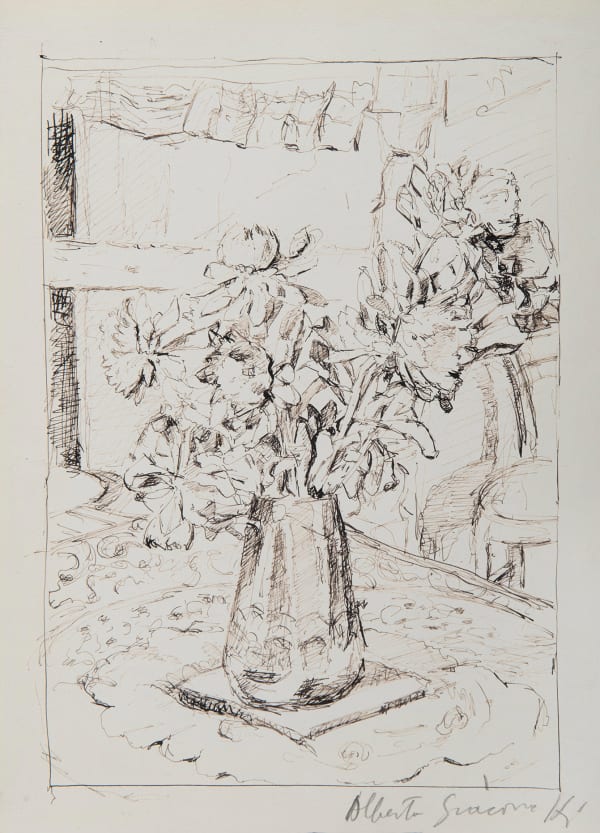ALBERTO GIACOMETTI 1901-1966
Son of the post Impressionist painter Giovanni Giacometti and godson of the Fauvist artist Cuno Amiet, Alberto Giacometti grew up in an artistic environment. At his debuts, Alberto Giacometti painted in his father's style. At the beginning of the 1910's, while Alberto Giacometti is a student at Geneva's school of Fine Arts, he started sculpting. In 1922, living in Paris, Alberto Giacometti attended the Grande Chaumière Academy and Antoine Bourdelle's courses. His first sculptural production is characterized by a Cubist approach close to that of Cubist sculptor Henri Laurens or Alexender Archipenko. Apart from a cubist inspiration, Giacometti is also influenced by the African and Oceanian art he discovered at the Ethnographic museum of the Trocadéro. If his first sculptures were considered as cubists, Alberto Giacometti produced from 1930 on, abstract and surrealist sculptures. His suspended ball (1930/1931) is the first artwork of the artist considered as surrealist. The simplicity of the sculpture hints however an erotic message. Erotism has been a topic broached by many surrealist artists. In 1935, Alberto Giacometti abandoned the surrealist movement and started progressively creating his renowned filiform sculptures of heads, busts or bodies. His first retrospective was held in Basel in 1950. This same year, for the first time, one of his sculptures entered a public collection. At the end of his career he was very successful; he received the Sculpture price of the Venezia Biennale in 1962, the Guggenheim price in 1964, and France awarded him with the International price for the arts in 1965.




